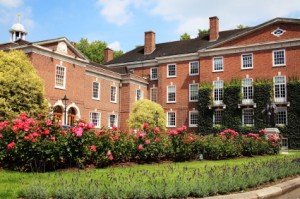Posted by Neil Rose, Editor, Legal Futures
Have you read last month’s Legal Services Board (LSB) report that found the Bar Council encroached the Bar Standards Board’s (BSB) regulatory independence? I doubt it; it’s a lengthy document and it’s taken me three weeks to find the time.
But for those questioning the continuing need for the LSB – chief among whom are, of course, the Bar Council and BSB – it is a must-read.
The report, following an investigation lasting around five months, relates to changes made by the BSB to its regulatory arrangements, approved by the LSB, to bring into force the new contractual terms for barristers, including a controversial change to the cab-rank rule.
One of the core purposes of the Legal Services Act 2007 was to ensure that regulation of the legal profession was conducted independently of representative interests, and the LSB has brought this to life through its internal governance rules (IGR), with which those bodies where regulation and representation is split need to comply and indeed self-certify on an annual basis that they continue to do so.
That is where we are and so for now I am putting to one side the fact that both the Law Society and Bar Council are lobbying the government hard to reverse this to some extent.
The Bar Council had been dealing with the issue of standard terms for several years before the BSB was created in 2006, and continued to do so thereafter even though it knew, or should have known, that this was a regulatory matter, the LSB said. It found that there was no effort to consider whether this continuing role was appropriate or how to transfer knowledge and control to the BSB.
The report repeatedly described the Bar Council as the “controlling mind”, exercising “undue influence and control” over the BSB. It put papers to BSB committees, proposed changes driven by barristers’ needs rather than the requirements of the Legal Services Act and ran a consultation that the BSB should have handled.
Even when, near the end of the process, the BSB started to show signs of wanting to take a more proactive role, it was usually batted away by the Bar Council.
According to the LSB, “it appears the BSB was, to a significant extent, captured by its representative arm on this issue over a number of years.”
It said: “Generally the Bar Council acted in a manner that showed little regard for the IGR and/or the risks to the regulatory objectives from its actions; it felt free to propose alterations to the BSB’s regulatory arrangements, reject suggestions from the BSB and attend and speak at BSB meetings.
“The Bar Council was left to produce the application to alter the BSB’s regulatory arrangements and while advice and amendments were provided by the BSB, many of these were to mask the author of the work.”
The report, however, concluded that the Bar Council had not deliberately attempted to deceive the LSB as to the extent of its involvement in the rule change application. On my reading of it, this must have been a close-run thing; e-mails between Bar Council and BSB staff cited in the report show they were aware of the need to make sure the change was seen as the BSB’s work given previous criticism by the LSB of the pair’s closeness.
The LSB also found: “The subtle changes to the drafting [of the rule-change application] indicate that both the BSB and the Bar Council recognised the need to obscure the true extent of the Bar Council’s involvement. Although we have seen no evidence that the objective of these actions was to mislead the LSB, in our judgement both the Bar Council and the BSB should have realised that this could have been the likely effect of the changes.” As I said, a close-run thing.
The focus of the report was very much on the Bar Council, whose responsibility it was/is to ensure the independence of the BSB. The Bar Council and BSB have, it is important to note, accepted the main findings. But one does have to wonder where the senior members of the BSB – who in my experience are no shrinking violets – were during this time.
The findings of the report reinforce a long-standing feeling that I and many others – not least the LSB – have had that the Bar Council and BSB are a little too close for comfort. It was only in May that the LSB said: “Over 2012/13, our general observation is that the BSB has sought to maintain its independence from the Bar Council. However, there have been incidents where the LSB has been concerned about the Bar Council’s attempts to fetter this independence…
“Moreover, the LSB remains concerned about the potential for Bar Council staff or committees to assume responsibility for regulatory functions.”
The BSB’s guiding principle, I sense from attending its board meetings, is that the existence of the Bar is in the public interest. I wouldn’t disagree with this, but at times it can mean the public interest and the profession’s interests are uncomfortably elided.
The wider relevance of all this is the aforementioned effort by the Bar Council and Law Society to have responsibility for training, authorisation and standards setting returned to them, with the BSB and Solicitors Regulation Authority much-slimmed down organisations responsible for enforcement and discipline, and the LSB either abolished or at least substantially cut down.
To this end, the timing of the investigation (triggered by a Bar Council press release claiming credit for the standard terms) has been very handy for the LSB as it battles to justify its continuing value as an active oversight regulator.
But that aside, the fact is that if you believe in independent regulation, and have doubts that the Law Society council or Bar Council could really act in the public interest, rather than their members’ interests, when dealing with regulatory issues, then this report will only fortify you. For the Bar Council and Law Society, it is by contrast extremely unhelpful. But it would appear that the Bar Council has only itself to blame.














You’re right – it’s a ‘must read’.
However, it’s hardly a surprise when you reflect on how the BC and the BSB share the same premises, the same reception/switchboard, the same meeting rooms and, from time to time, swap staff. Independent?
Clearly, individual members of the BSB/BC had their arms up the back of each others’ shirts. I don’t imagine, for one moment that anyone has been lightly reprimanded, disciplined or, as would happen in the real world, fired.
Who is BC11?